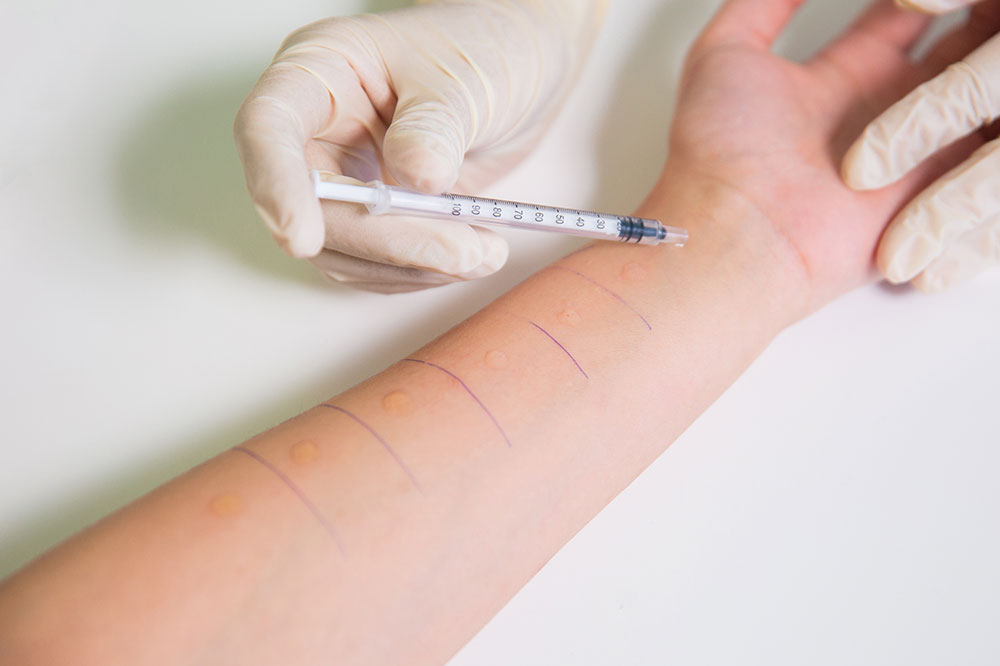Comprehensive Guide to Detecting and Managing Allergies Effectively
Discover comprehensive methods to effectively identify and manage allergies. This guide explains allergy causes, symptoms, testing techniques like blood and skin tests, and treatment options, empowering individuals to take control of allergic reactions and improve their quality of life.

Experiencing frequent episodes of sneezing when outdoors, developing skin rashes after contact with certain plants, or noticing swelling after consuming nuts are among common allergy symptoms that many individuals face. These reactions—such as itchy and watery eyes, persistent runny noses, skin rashes, and swelling—can significantly impact daily life. Allergies are widespread health concerns, triggered by a variety of environmental and genetic factors. While the exact cause of allergies remains complex and not always fully understood, prompt and accurate diagnosis is essential for effective management. This detailed guide aims to shed light on the nature of allergies, elaborate on reliable methods to identify them, and provide insights into managing allergy symptoms effectively. Whether you’re suspecting an allergy or have been diagnosed, understanding these detection techniques can empower you to take control of your health.
Understanding Allergies: An Overview
Our immune system functions as a natural defense mechanism, protecting our body from harmful pathogens like bacteria, viruses, and toxins. It does so by identifying and attacking foreign substances that threaten health. However, in individuals with allergies, this immune response becomes overzealous. The immune system mistakenly perceives harmless substances—such as pollen from trees, dust particles, specific foods, or pet dander—as dangerous invaders. These substances are known as “allergens.” When the immune system overreacts, it triggers a cascade of symptoms including sneezing, itchy and watery eyes, skin rashes, swelling, and respiratory discomfort. Allergic reactions can range from mild to severe, with some cases escalating to life-threatening anaphylaxis. Due to the complexity of allergy triggers and individual variability, proper diagnosis is crucial for effective treatment and lifestyle adjustments.
How to Detect and Identify Allergies
Seek professional medical advice
Given that allergy symptoms can often resemble other health issues, consulting a healthcare professional is the first step towards accurate diagnosis. A doctor will evaluate your detailed medical history, ask about specific symptoms, exposure times, and possible triggers. Additionally, a physical examination helps identify visible signs such as skin rashes, nasal congestion, or swelling in different parts of the body. This comprehensive assessment helps determine whether allergies are the cause of your symptoms, clarifies severity, and guides further testing options.
Allergy testing methods
Allergy tests are fundamental tools used by medical professionals to pinpoint specific allergens. While allergy computations can involve multiple tests, common testing methods include blood tests and skin prick tests. Both approaches are quick, minimally invasive, and highly effective in providing accurate results.
Blood Tests
Blood tests, often referred to as specific IgE tests, measure the level of Immunoglobulin E (IgE) antibodies in the blood. Elevated IgE levels in response to certain allergens suggest a sensitivity or allergy. This test is particularly useful for individuals with skin conditions that make skin prick tests less reliable or for those who prefer non-prick options. Blood testing can identify sensitivities to a broad spectrum of allergens, including foods, pollens, pet dander, and dust mites, providing comprehensive insights into allergy profiles.
Skin Prick Tests
Skin prick testing is a common and straightforward method to detect allergic sensitivities. In this procedure, a small amount of potential allergen extract is applied to your skin, usually on the forearm or back. An experienced healthcare provider then gently pricks or scratches the skin to allow the allergen to penetrate the outer layer. If you are allergic to a particular substance, a localized allergic reaction occurs, characterized by redness, swelling, or itching within minutes. This test is highly specific, fast, and often the first choice for allergy diagnosis. It can be performed in a clinic setting and provides immediate results, allowing for prompt identification of triggers.
Once your allergies are diagnosed, your healthcare provider will recommend appropriate treatment options. These may include antihistamines, corticosteroids, or allergy immunotherapy such as allergy shots. In addition, lifestyle modifications—like avoiding specific allergens, wearing protective gear, or carrying emergency medication—can significantly improve quality of life. It’s important to note that while most allergies are not life-threatening, some can cause severe reactions. Therefore, always carry prescribed medication or an epinephrine auto-injector if advised. Wearing an allergy identification bracelet and maintaining regular follow-ups with your healthcare professional are also essential components of allergy management.





